Related Research Articles

The Japan Aerospace Exploration Agency (JAXA) is the Japanese national aerospace and space agency. Through the merger of three previously independent organizations, JAXA was formed on 1 October 2003. JAXA is responsible for research, technology development and launch of satellites into orbit, and is involved in many more advanced missions such as asteroid exploration and possible human exploration of the Moon. Its motto is One JAXA and its corporate slogan is Explore to Realize.
LUNAR-A is a cancelled Japanese spacecraft project that was originally scheduled to be launched in August 2004. After many delays, the project was eventually cancelled in January 2007. It was planned to be launched on a Japanese M-V rocket from the Kagoshima Space Center.
The Ride Report is the informal name of the report titled NASA Leadership and America's Future in Space: A Report to the Administrator. In 1986, a task force under the leadership of Sally Ride was asked to formulate a new strategy for NASA. The report was issued in 1987.

The physical exploration of the Moon began when Luna 2, a space probe launched by the Soviet Union, made an impact on the surface of the Moon on September 14, 1959. Prior to that the only available means of exploration had been observation from Earth. The invention of the optical telescope brought about the first leap in the quality of lunar observations. Galileo Galilei is generally credited as the first person to use a telescope for astronomical purposes; having made his own telescope in 1609, the mountains and craters on the lunar surface were among his first observations using it.
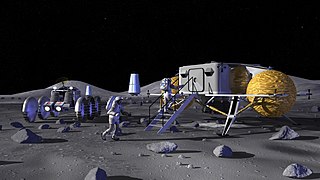
A lunar outpost is a concept of a permanent or semi-permanent presence of humans on the Moon, a moonbase, by the United States space administration NASA. NASA has requested an increase in the 2020 budget of $1.6 billion, in order to make another crewed mission to the Moon by 2024, followed by a sustained presence on the Moon by 2028.
Luna-Glob is a Moon exploration programme by Roscosmos meant to progress toward the creation of a fully robotic lunar base. When completed, the programme will continue with crewed lunar missions, starting with a crewed orbiter spacecraft called Orel.

The Space Exploration Initiative was a 1989–1993 space public policy initiative of the George H. W. Bush administration.
The International Lunar Network or ILN was a proposed network of lunar surface stations to be built by the United States and the other space-faring countries in the 2010s. Each of these stations would act as a node in a lunar geophysical network. Ultimately this network could comprise 8-10 or more nodes operating simultaneously. Each node would have a minimum of two core capabilities. These capabilities include seismic sensing, heat flow sensing, and laser retroreflectors, and would be specific to each station. Because some nodes were planned to be located on the far side of the Moon, NASA would have contributed a communications relay satellite to the project. Individual nodes launched by different space agencies could have carried additional, unique experiments to study local or global lunar science. Such experiments might include atmospheric and dust instruments, plasma physics investigations, astronomical instruments, electromagnetic profiling of lunar regolith and crust, local geochemistry, and in-situ resource utilization demonstrations.
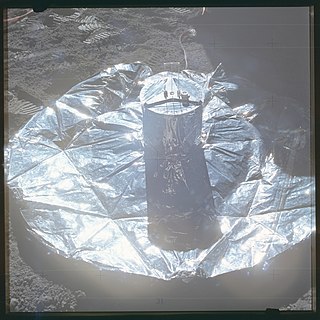
Lunar seismology is the study of ground motions of the Moon and the events, typically impacts or moonquakes, that excite them.
The (Japanese) Lunar Exploration Program (月探査計画) is a program of robotic and human missions to the Moon undertaken by the Japanese Aerospace Exploration Agency (JAXA) and its division, the Institute of Space and Astronautical Science (ISAS). It is also one of the three major enterprises of the JAXA Space Exploration Center (JSPEC). The main goal of the program is "to elucidate the origin and evolution of the Moon and utilize the Moon in the future".
Lunar Mission One was a proposed international, crowdfunded, robotic mission to the Moon, led by Lunar Missions Limited in England. They did not obtain $1 billion funding for research, development and launch of a spacecraft, meant to be launched in 2024. The Lunar Mission One program closed down due to tax issues.

Luna 27 is a planned lunar lander mission by the Roscosmos with collaboration by the European Space Agency (ESA) to send a lander to the South Pole–Aitken basin, an area on the far side of the Moon. Its objective will be to detect and characterise lunar polar volatiles. The mission is a continuation of the Luna-Glob programme.
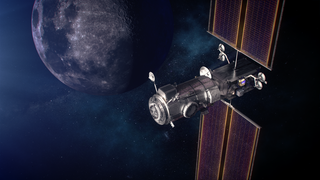
The Lunar Gateway, or simply Gateway, is a planned small space station in lunar orbit intended to serve as a solar-powered communication hub, science laboratory, short-term habitation module for government-agency astronauts, as well as a holding area for rovers and other robots.

Luna 26 is a planned lunar polar orbiter, part of the Luna-Glob program, by Roscosmos. In addition to its scientific role, the Luna 26 orbiter would also function as a telecomm relay between Earth and Russian landed assets. This mission was announced in November 2014, and its launch is planned for 2024 on a Soyuz-2 launch vehicle.

Commercial Lunar Payload Services (CLPS) is a NASA program to contract transportation services able to send small robotic landers and rovers to the Moon's south polar region mostly with the goals of scouting for lunar resources, testing in situ resource utilization (ISRU) concepts, and performing lunar science to support the Artemis lunar program. CLPS is intended to buy end-to-end payload services between Earth and the lunar surface using fixed priced contracts.

The Artemis Program is a United States-led international human spaceflight program. It was launched in 2017 under the Trump administration with the primary goal of returning humans to the Moon, specifically the lunar south pole, in the mid-2020s. If successful, it will be the first crewed lunar mission since the end of the Apollo program in 1972.
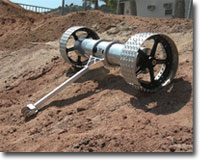
Moon Diver is a proposed lunar mission concept by NASA's Jet Propulsion Laboratory that would employ a robotic lander and a two-wheeled rover called Axel to investigate the exposed geological layers on the walls of a deep lunar pit.
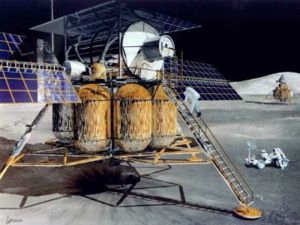
First Lunar Outpost was a proposal for a crewed lunar mission that would have launched sometime in the 2010s. It was part of George H. W. Bush's Space Exploration Initiative. The main purpose of the proposal was to offer a much cheaper alternative to NASA's 90-day study from 1989 by a factor of US$30 billion. Although it did not gather much mainstream attention, NASA dedicated much time to assembling a very detailed and thorough proposal. However, the entire Space Exploration Initiative was cancelled soon after the proposal's completion, and NASA had to close the Office of Space Exploration in March of 1993.
References
- 1 2 Ghosh, Pallab (10 January 2007). "Britain plans first Moon mission". BBC News.
- ↑ Missile practice for Moon mission, http://news.bbc.co.uk/2/hi/science/nature/7438270.stm, BBC, 6 June 2008
- ↑ "UK Lunar Science Missions: MoonLITE & Moonraker" (PDF). Retrieved 24 October 2010.
- ↑ "Archived copy". Archived from the original on 15 March 2009. Retrieved 22 February 2009.CS1 maint: archived copy as title (link) BNSC press release "MoonLITE mission gets green light for next step"
- ↑ Fleming, Nic (11 January 2007). "British space team to shoot for the Moon". The Telegraph.[ dead link ]
- ↑ BBC news report, 6 June 2008: 'Moon missiles' tested in UK
- ↑ "Archived copy". Archived from the original on 9 February 2009. Retrieved 22 February 2009.CS1 maint: archived copy as title (link) BNSC press release, 28 April 2008 "Lunar exploration: Potential UK and NASA collaboration".
- ↑ Ghosh, Pallab (14 December 2007). "Nasa 'to support UK Moon mission'". BBC News.
- ↑ "UK Space Agency" . Retrieved 19 September 2018.